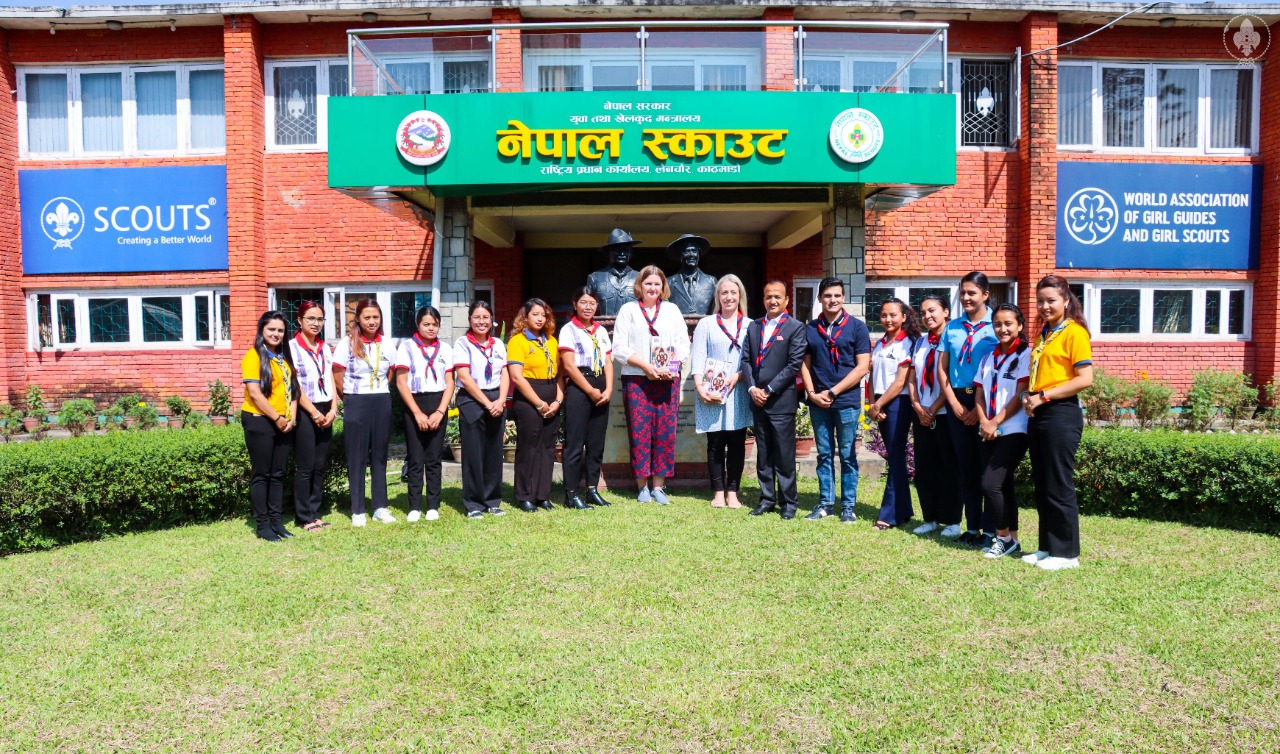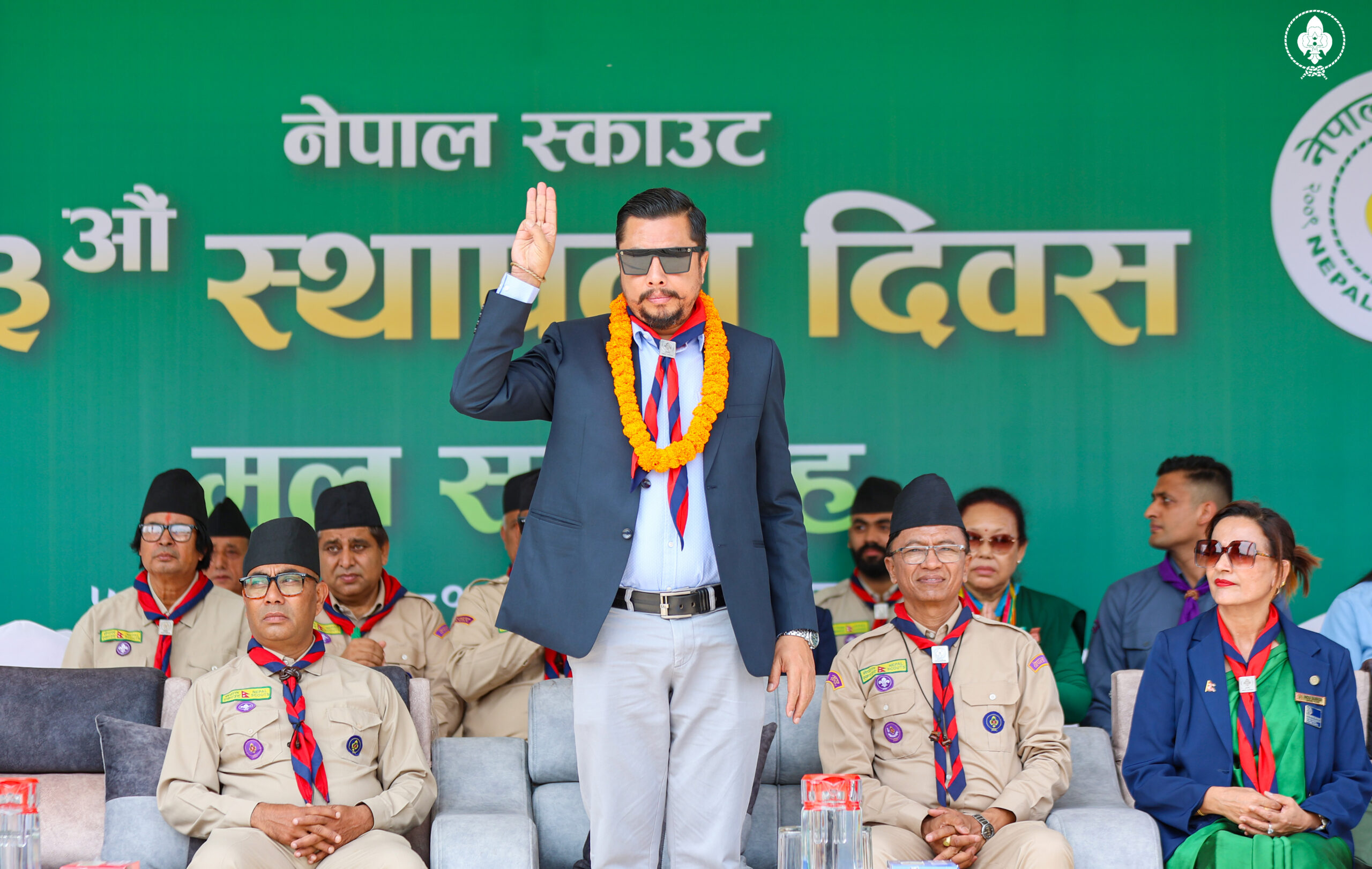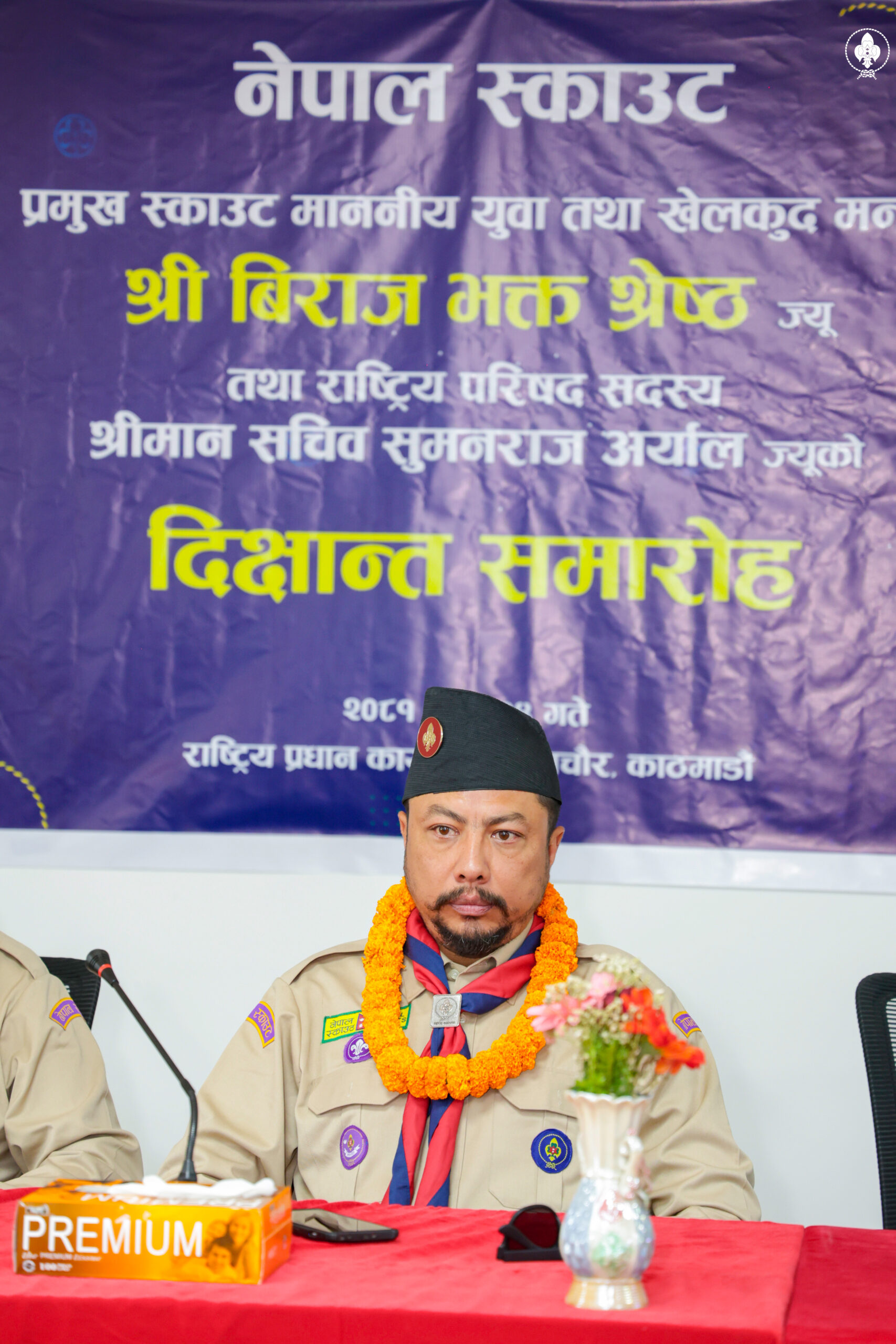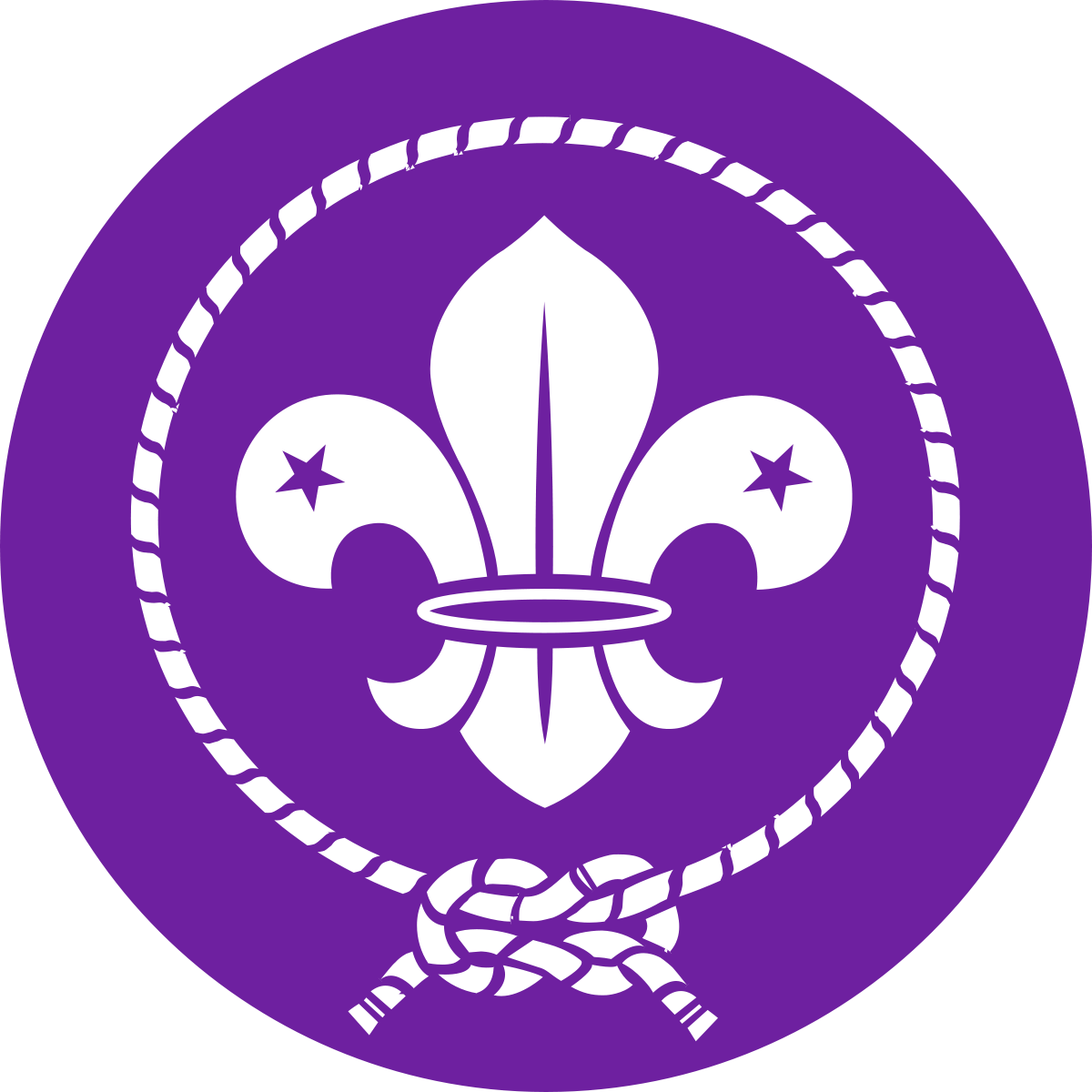Quality Leadership Development in Scouting by Bijendra Dhowju, Member, National Ad-Hoc Committee
September 18, 2020
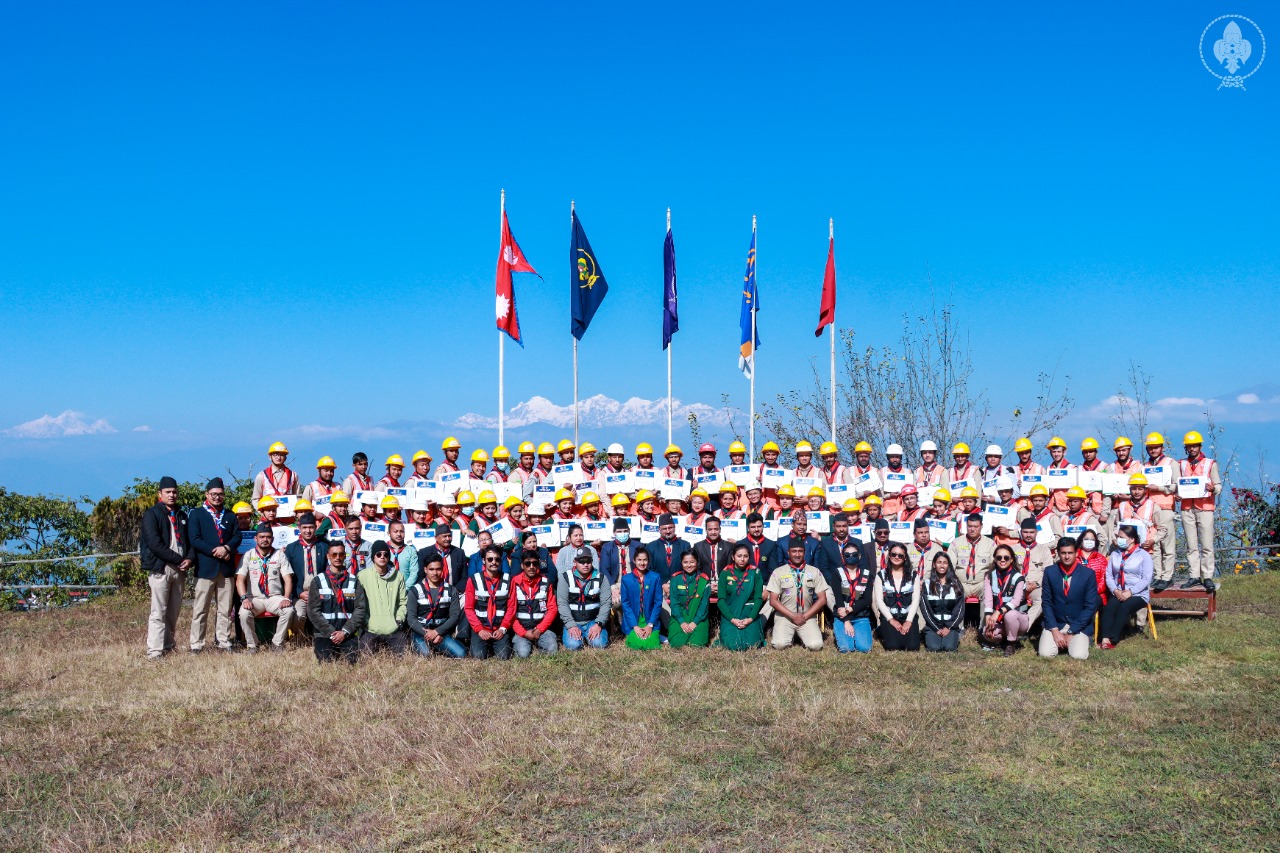
September 18, 2020, The reflection on the previous session held on 12th September 2020 on “Marketing/Promotion of Scouting” led by Ms. Megan Neuffer, Capacity Building Lead for Image and Visibility from WAGGGS was presented by Ms. Mabila Khadka.
The thirteenth session of the Capacity Enhancement Webinar Series was administered by Mr. Bijendra Dhowju, Member, National Ad-Hoc Committee on the topic “Quality Leadership Development in Scouting”. The main objective of the session includes:
- To enhance Leadership quality of Trainers.
- To develop skills and knowledge on using digital tools to continue Scouting activities through a virtual platform.
In the first part of the session, he explains Leadership Development. Firstly he defines leadership and says “ Leadership is the art of motivating a group of people to act towards achieving a common goal”. He also explained Leadership as
- L= Lead by example
- E= Enthusiasm
- A= Accountability
- D= Determination
- E= Excited
- R= Responsible
- S= Skilled
- H= Honest
- I= Intelligent
- P= Personality
Next, he explains the essence of good leadership which includes Intelligence ( Academic, Technical), Emotional Stability, Understanding human behavior, Confidence, Inspiring, Passion and Commitment, Good Communication, etc. Secondly, he explain about the four types of Leadership styles which are:-
- Autocratic leadership style
- Laissez-faire leadership style
- Democratic leadership style
- Bureaucratic leadership style
Thirdly, he explained about the leader and the boss and explained the difference between the leader and the boss. He also talked about the difference between the leader and the manager.
Furthermore, he focused on ego and said “ Ego is defined as the view that a person has of himself ”. He explains about the Parent ego, Adult ego, and Child ego. He also explains the type of parents which include:
- 1.) Critical parents
- 2.) Nurturing parents
Next, he talks about the Adult and the types of the child which include:
- Rebellious Child
- Adapted Child
- Free Child
In the second part of the session, he talked about Leadership in scouting. He said, “ A good leader is a lifelong learner who consciously deepens their understanding of different contexts ”. He also talks about 21st-century leadership. He explains three main aspects of leadership which are:
- Establishing a vision
- Engaging and empowering others
- Facilitating change towards the purpose.
Next, how leadership can be developed in the Youth programme and about the Boy, Girl scout leadership. He then explains the leadership checklist for the units. He then talks about the Situational leadership and four standard possibilities which include:
- People who are unable to do a task and who are unwilling to have
- People who are unable to do a task, but are willing to have
- People who are able to do a task, but who are unwilling to do so,
- People who are able to do a task, and who are willing to get on.
Next, he also explains the appropriate style of leadership which are:
- Telling (directive)
- Selling (persuading)
- Sharing (consulting)
- Delegating
Further, he explains about the four-step EDGE process.
- FORMING STATE- LEADERSHIP STYLE DIRECTING- EXPLAINING
- STORMING STATE- LEADERSHIP STYLE: SUPPORTING- GUIDING
- NORMING STATE- LEADERSHIP STYLE: SUPPORTING- GUIDING
- PERFORMING STATE- LEADERSHIP STYLE: DELEGATING- ENABLING
Lastly, he explains the qualities of a Unit leadership and he also talked about the knowledge of digital tools to continue Scouting.
The thirteenth day of the session on the topic “ Quality Leadership Development in Scouting” was successfully concluded with 54 participants.

